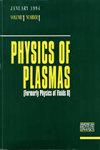Artificial excitation and propagation of ultra-low frequency signals in the polar ionosphere
IF 2.2
3区 物理与天体物理
Q3 PHYSICS, FLUIDS & PLASMAS
引用次数: 0
Abstract
This paper has established a relatively comprehensive model for ultra-low frequency (ULF) current induced by thermal pressure gradients and its propagation. In the ULF current excitation model, we decomposed the current into a constant term unaffected by altitude and a product with a function significantly influenced by altitude. Combining this with the EISCAT background, we determined that for modulation frequencies below 5 Hz, the optimal height for ULF current excitation corresponds to the critical frequency height. We calculated the ionospheric currents at heating altitudes of 332 km for modulation frequencies of 5 Hz; the corresponding maximum currents were 1.03 × 10−10 A·m−2. By incorporating the current into the ULF waves propagation model based on magnetoionic theory, we found that the electromagnetic field energy is mainly concentrated in the horizontal direction, indicating that the energy primarily propagates outward through magnetosonic waves. The dominant components are the electric field component Ey and the magnetic field component Bz, whose maximum values reached 1.1 μV·m−1 and 1.5 pT. Unfortunately, magnetosonic waves cannot propagate downward due to the sharp variation in the real part of the refractive index between 200 and 300 km. However, the shear Alfvén waves component By can propagate downward, and there is still an intensity of approximately 0.1 pT at the bottom of the ionosphere, which is because the refractive index of shear Alfvén waves is most uniform in the parallel magnetic field direction, allowing By to propagate parallel to the magnetic field effectively.极地电离层中超低频率信号的人工激发和传播
本文为热压梯度引起的超低频(ULF)电流及其传播建立了一个相对全面的模型。在超低频电流激励模型中,我们将电流分解为一个不受海拔高度影响的常数项和一个受海拔高度影响较大的函数乘积。结合 EISCAT 背景,我们确定,对于低于 5 赫兹的调制频率,超低频电流激发的最佳高度与临界频率高度相对应。我们计算了加热高度为 332 公里、调制频率为 5 赫兹的电离层电流;相应的最大电流为 1.03 × 10-10 A-m-2。通过将电流纳入基于磁离子理论的超低频波传播模型,我们发现电磁场能量主要集中在水平方向,表明能量主要通过磁离子波向外传播。主要分量是电场分量 Ey 和磁场分量 Bz,其最大值分别达到 1.1 μV-m-1 和 1.5 pT。遗憾的是,由于折射率实部在 200 至 300 公里之间的急剧变化,磁声波无法向下传播。然而,剪切阿尔芬波分量 By 可以向下传播,在电离层底部仍有约 0.1 pT 的强度,这是因为剪切阿尔芬波的折射率在平行磁场方向上最为均匀,使得 By 可以有效地平行于磁场传播。
本文章由计算机程序翻译,如有差异,请以英文原文为准。
求助全文
约1分钟内获得全文
求助全文
来源期刊

Physics of Plasmas
物理-物理:流体与等离子体
CiteScore
4.10
自引率
22.70%
发文量
653
审稿时长
2.5 months
期刊介绍:
Physics of Plasmas (PoP), published by AIP Publishing in cooperation with the APS Division of Plasma Physics, is committed to the publication of original research in all areas of experimental and theoretical plasma physics. PoP publishes comprehensive and in-depth review manuscripts covering important areas of study and Special Topics highlighting new and cutting-edge developments in plasma physics. Every year a special issue publishes the invited and review papers from the most recent meeting of the APS Division of Plasma Physics. PoP covers a broad range of important research in this dynamic field, including:
-Basic plasma phenomena, waves, instabilities
-Nonlinear phenomena, turbulence, transport
-Magnetically confined plasmas, heating, confinement
-Inertially confined plasmas, high-energy density plasma science, warm dense matter
-Ionospheric, solar-system, and astrophysical plasmas
-Lasers, particle beams, accelerators, radiation generation
-Radiation emission, absorption, and transport
-Low-temperature plasmas, plasma applications, plasma sources, sheaths
-Dusty plasmas
 求助内容:
求助内容: 应助结果提醒方式:
应助结果提醒方式:


